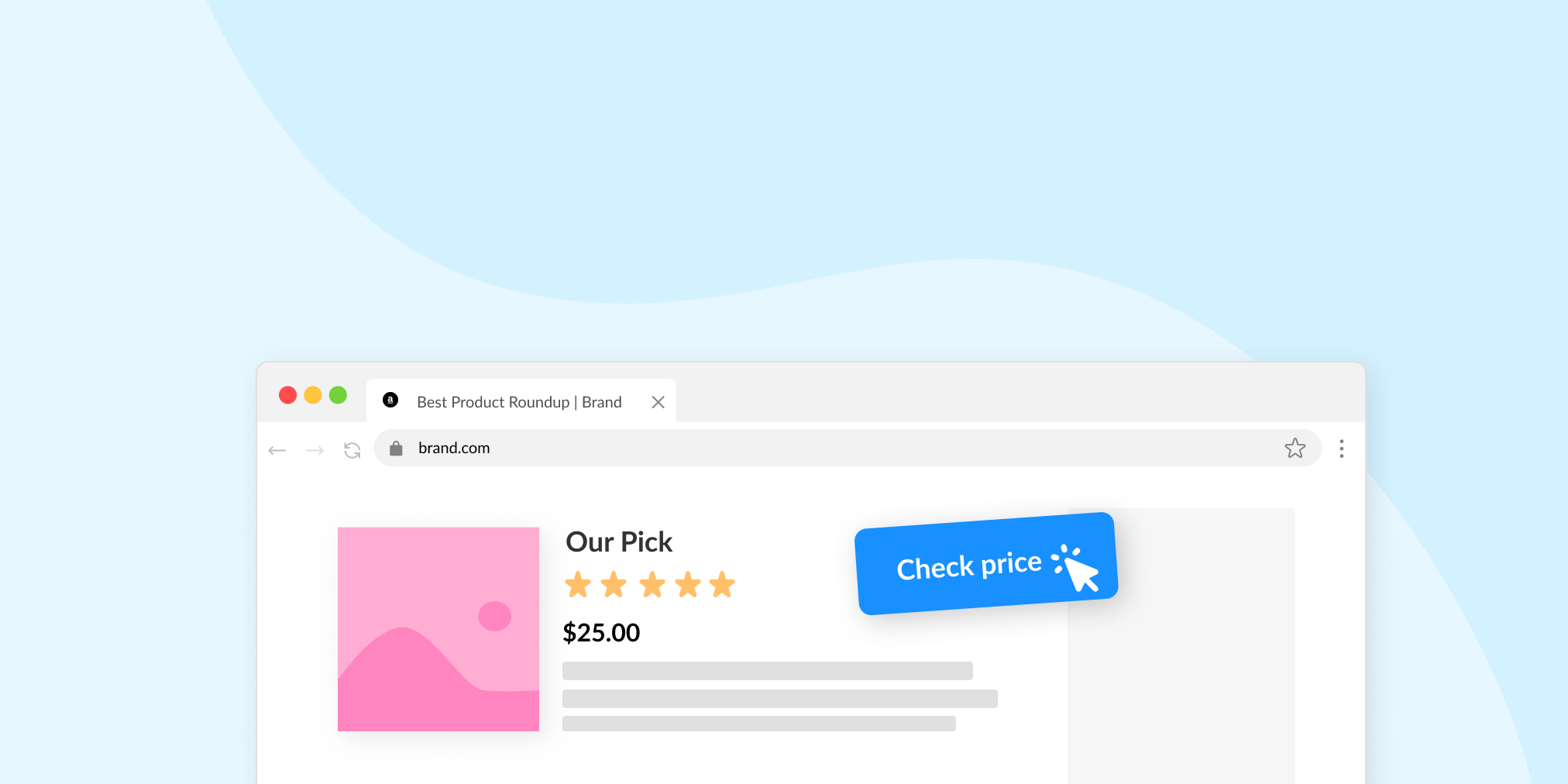What is Commerce Content? Examples to Shape Your Strategy
The days of relying solely on display ads to monetize a media website are gone. Today, 84% of media publishers create commerce content monetized with affiliate marketing.
And that number is on the rise.
It’s no surprise why publishers, many of whom work with Affilimate, are turning to this channel as a way to monetize their content.
Not only is the revenue per visitor to commerce content far higher than from ads. But being able to negotiate and collaborate with brands to increase commissions based on performance makes it an attractive option for everyone involved.
How exactly does commerce content work and what does it take to build a high quality editorial workflow that produces it? Let’s find out.
What is Commerce Content?
Commerce content is the partnership between brands and media publishers to create content that drives product sales, usually in exchange for an affiliate commission.
Publishers producing this type of editorial content often review products, perform product comparisons, and provide useful information that helps members of their audience make a buying decision.
Readers benefit from reading an independent, expert review of a brand’s products.
Brands benefit from the backing of the media publisher who’s built a reputation for this expertise.
And publishers benefit through a commission whenever a reader makes a purchase of one of the mentioned products after reading an article.
The most widely known example of commerce content is WireCutter.

WireCutter is famous for in-depth product reviews. These reviews often take 20,000 words or more to fully explain the features, benefits, and drawbacks of the products or product category they review.
This in-depth, expert-driven review process has earned WireCutter so much trust they've even charged for access to their review content.
With the latest string of Google product review updates, it’s clearer than ever that quality, authentic commerce content is where the world is heading. And as a media publisher, you can hop on the train at any time.
How does commerce content work?
The most common way commerce content is monetized is through affiliate marketing.
Each piece of commerce content that mentions a product typically also links to that product on a brand’s website. By using an affiliate link to do so, brands can keep track of which publisher referred the customer who ultimately made a purchase.
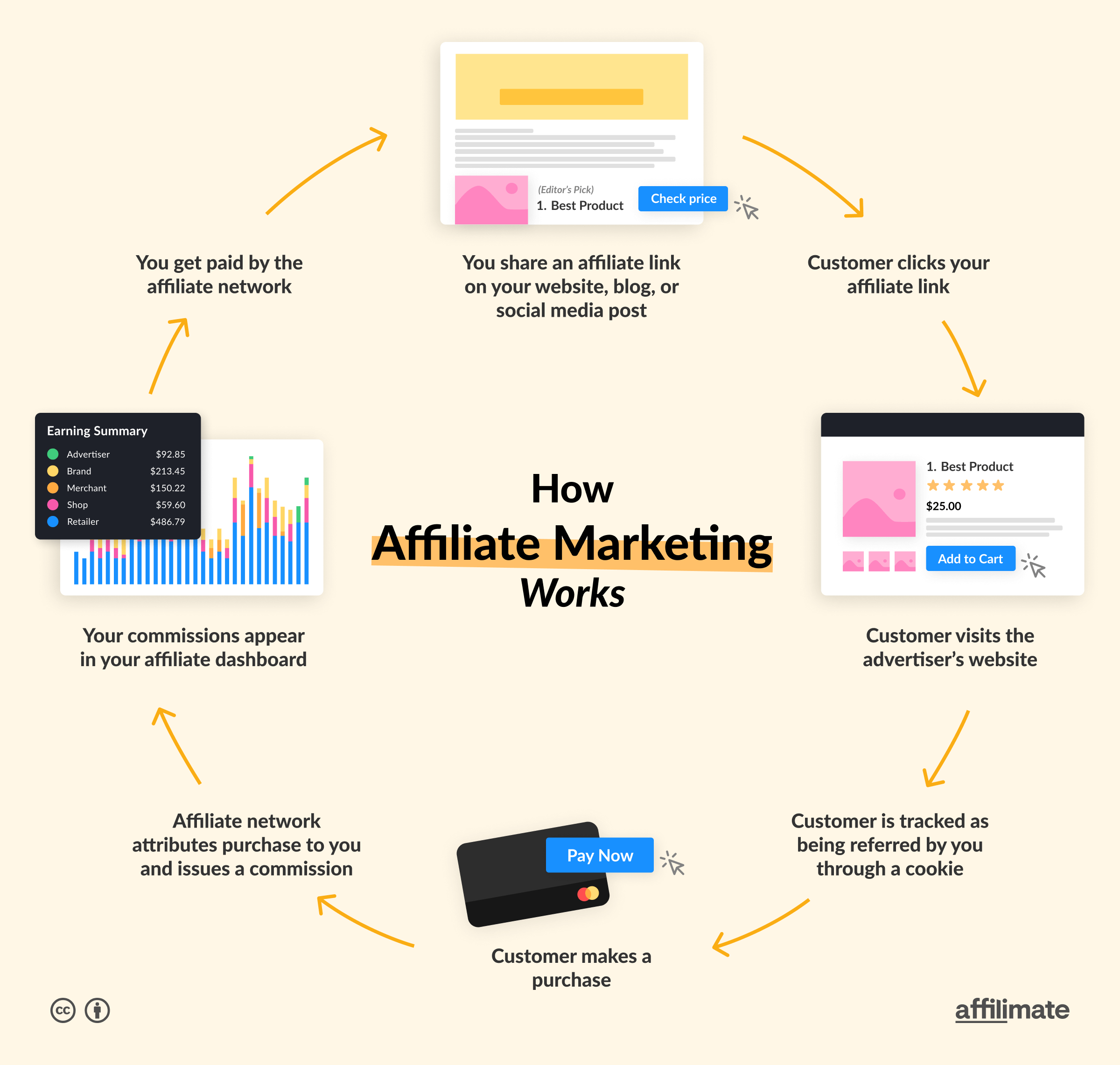
Publishers attract readers to their website through buyer-intent keywords, as well as owned traffic channels such as email, Twitter, and Instagram.
Commerce content is a particularly attractive model for brands to collaborate with publishers. This is because payment to the publisher is predominantly based on performance. Some publishers may create commerce content about a brand’s products for free, with the plan to monetize exclusively through the affiliate commissions.
This makes commerce content a particularly low-risk form of partner marketing. Low risk and low effort to get started is a key reason why 84% of businesses rate the ROI of affiliate marketing as better than other channels.
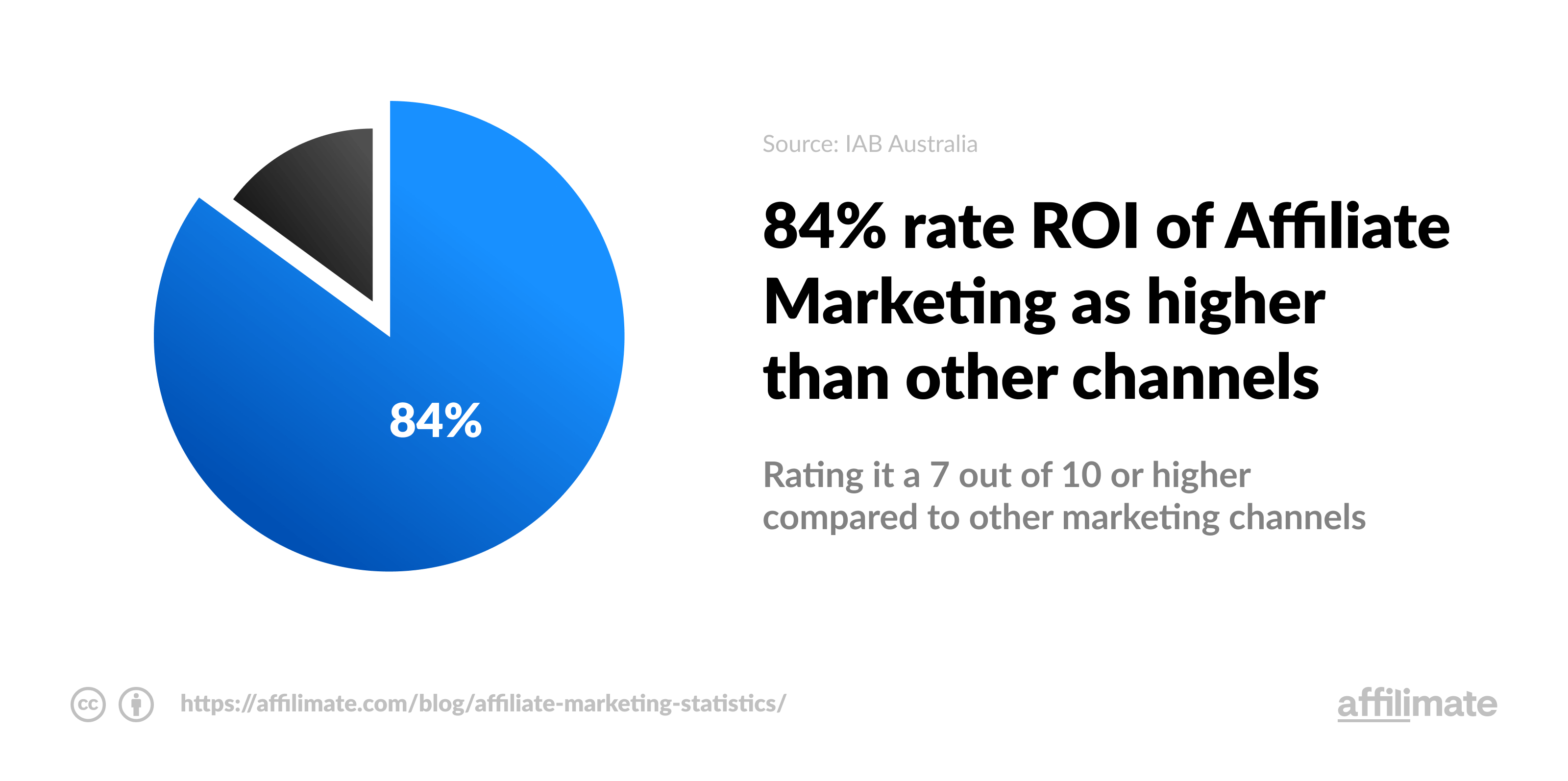
Larger, more established publishers may still want to receive an up-front payment for their effort and expense in creating the content. It’s also common to send publishers free product samples, which they can use to produce an authentic, hands-on review. Plus, brands setting up an affiliate program will need a few basics like tracking software to keep a record of referrals.
But once the content is live and the tracking is in place, it will continue to drive leads and sales for years to come.
Over time, brands and publishers can develop a long-term, mutually beneficial relationship where they collaborate on specific marketing campaigns and shared sales targets.
Top 5 examples of commerce content types
Here are the most popular types of commerce content:
Product reviews
Product reviews are a commerce content staple. Reviews break down one product in detail, so that by the end of the piece, a reader knows whether they want to buy.
Let’s start with an example from The Balance. This media brand falls under the Dotdash Meredith umbrella, and is estimated to pull $15-$25M per year in revenue – a sizable sum, most likely, from the commerce content they produce.
Here’s a commerce content example from their credit card reviews:

Product reviews like this usually contain the following sections:
- Product summary
- Product specifications
- Pros and cons
- Hands-on product images whenever possible
The review should be conducted or verified by experts, and contain information it’s not possible to get from the manufacturer’s website. That means a mix of primary sources and personal experience whenever possible.
And last, but not least, a product review typically includes a call-to-action where the reader can learn more – through an affiliate link.
Here’s how this type of commerce content looks on the The Balance:

Notice that The Balance doesn’t give glowing marks to every credit card they review. While you can always click through to learn more, they maintain editorial independence and rate cards poorly when they find drawbacks.
This practice is what helps them earn (and keep) their audience’s trust.
Product comparisons
Product comparisons pit two, similar products against each other. They show the similarities and differences, ideally based on first hand experience or expert research.
Here’s an example of product comparisons from Brides.com, which receives an estimated 12 million monthly visitors:

While Moissanite vs. Diamonds might not seem like a typical product comparison, it is information that someone is likely to search for before they buy an engagement ring. Brides.com knows this, and cleverly links out to their engagement ring buying guide early in the piece:

This is a great example of how informational content fills an important part in your commerce content strategy – not only as supporting content for SEO, but as a way to draw in prospective buyers early in their educational journey.
Product roundups
Product roundups, also called “best product reviews”, one of the most popular and best converting types of commerce content.
According to our data at Affilimate, product roundups usually generate more revenue than straight product reviews. Why do you think that is?
Not only do they fit into a sweet spot in the buyer’s journey, but the search volume is also high enough that ad revenue can be used to supplement what you’ll earn through your affiliate partnerships.

In this commerce content example from The Spruce, the author reportedly purchased and tested 28 different vacuums – and took a photo in her living room as proof!
The challenge behind product roundups is presenting all the options in a way that’s easy to understand at a glance. You want to segment your selection according to the reader's criteria. These should include factors like price, weight, size, or other product specifications.
In this piece, the editor chose to include vacuum styles like upright vs. canister:
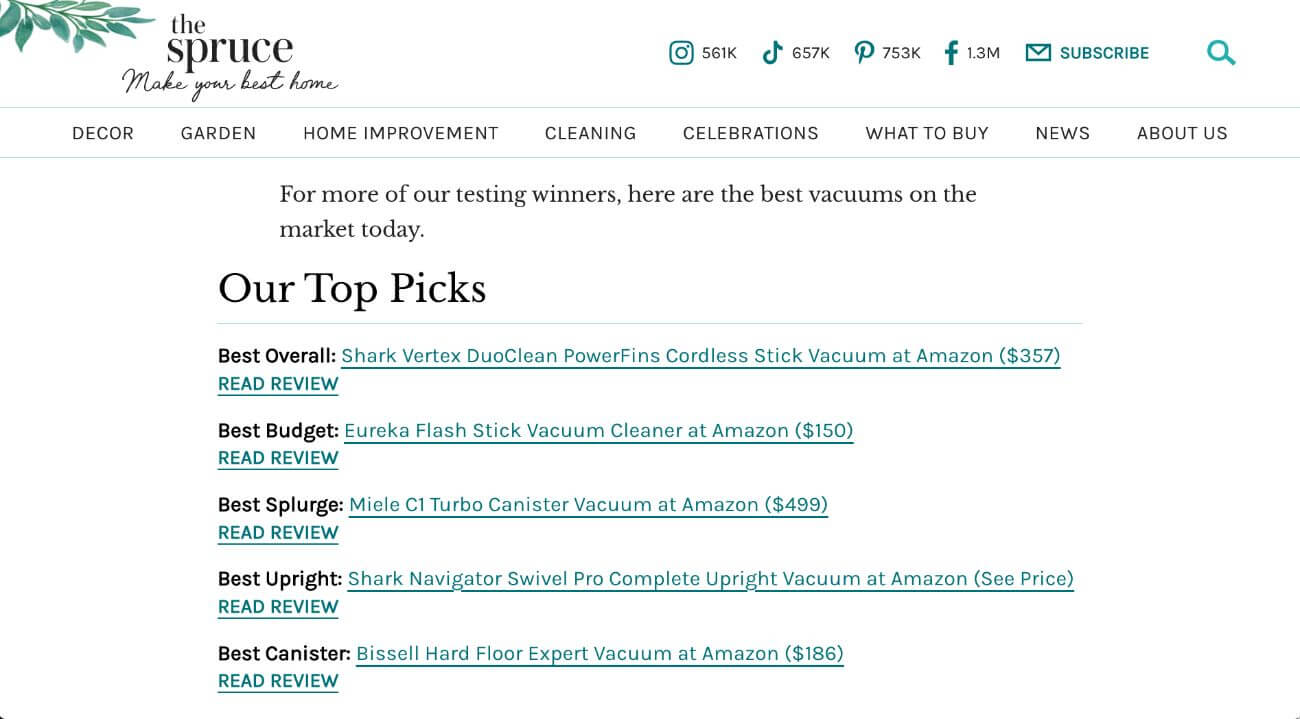
For a long list like this one, we recommend presenting them in a list style as opposed to an overly long side-by-side view.
But for best results, you can try both and test which one converts better.
Gift guides
Gift guides are a type of product roundup, which tend to receive highly seasonal traffic. This means that a content portfolio filled exclusively with gift guides will cause you to feast or famine, depending on the time of year.
But cashing in on Black Friday / Cyber Monday and the Christmas season is a huge opportunity. So don’t think about skipping the gift guides, even if they don’t earn year round.
Here’s a gift guide example from Lifewire:

In this example, the each product mentioned in the gift guide includes:
- Product name and image
- Product description
- Where to buy, and what price
Gift guides fall into many different categories, such as birthday gifts, wedding gifts, graduation gifts, Christmas and seasonal gifts, and gifts for new parents. No matter what vertical you’re in, there’s a chance for you to write a timely gift guide.
How to’s and tutorials
How to guides and tutorials are often overlooked types of commerce content, because they don’t always have buying intent behind the query. But with a little out-of-the-box thinking, most guides can include tasteful and relevant product recommendations.
Take a look at this makeup guide from Byrdie:

While the product you might think should be featured is eyeshadow, what really matters is the makeup brush used to achieve this look.
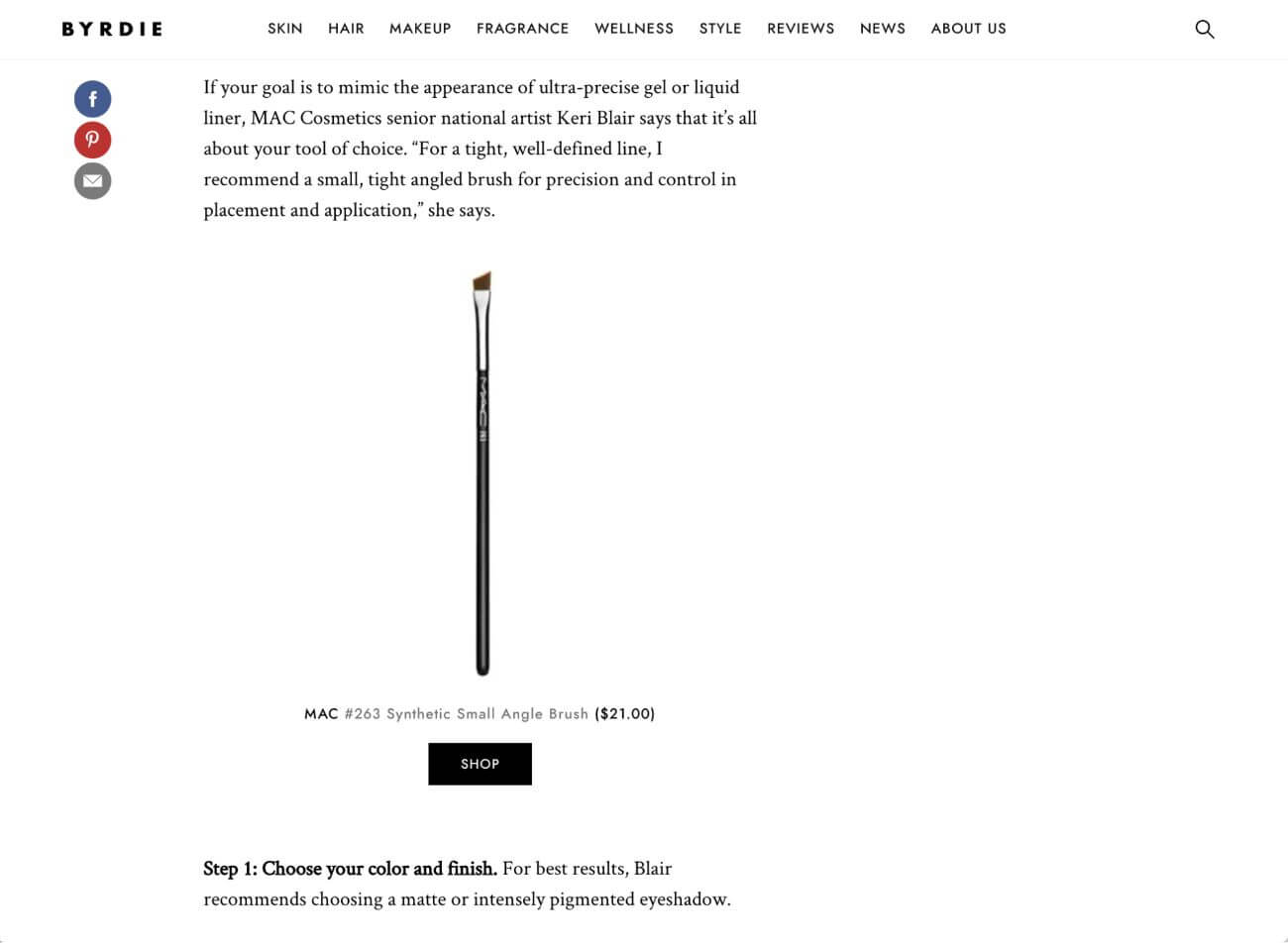
In a lot of commerce content, the start isn’t the products themselves but the tools and accessories that put those products to best use.
When getting started with commerce content, don’t forget to go back and do a content audit, so you can add affiliate links to articles which are already receiving traffic. It’s the quickest way to learn what works, and what doesn’t, with your particular audience.
Newsletters
Email is an often overlooked channel, but publishers in-the-know realize it’s one of their most powerful tools for pushing content to their audience. And unlike algorithms that can change from one day to the next, email is a test – albeit less sexy – way to punch through the noise.
A great example of commerce content in email comes from The Strategist:

Off the bat, it’s clear that the purpose of the newsletter is to share curated product resources. In the welcome email, The Strategist includes a target selection of their best commerce content: a combination of gift guide and product roundups.
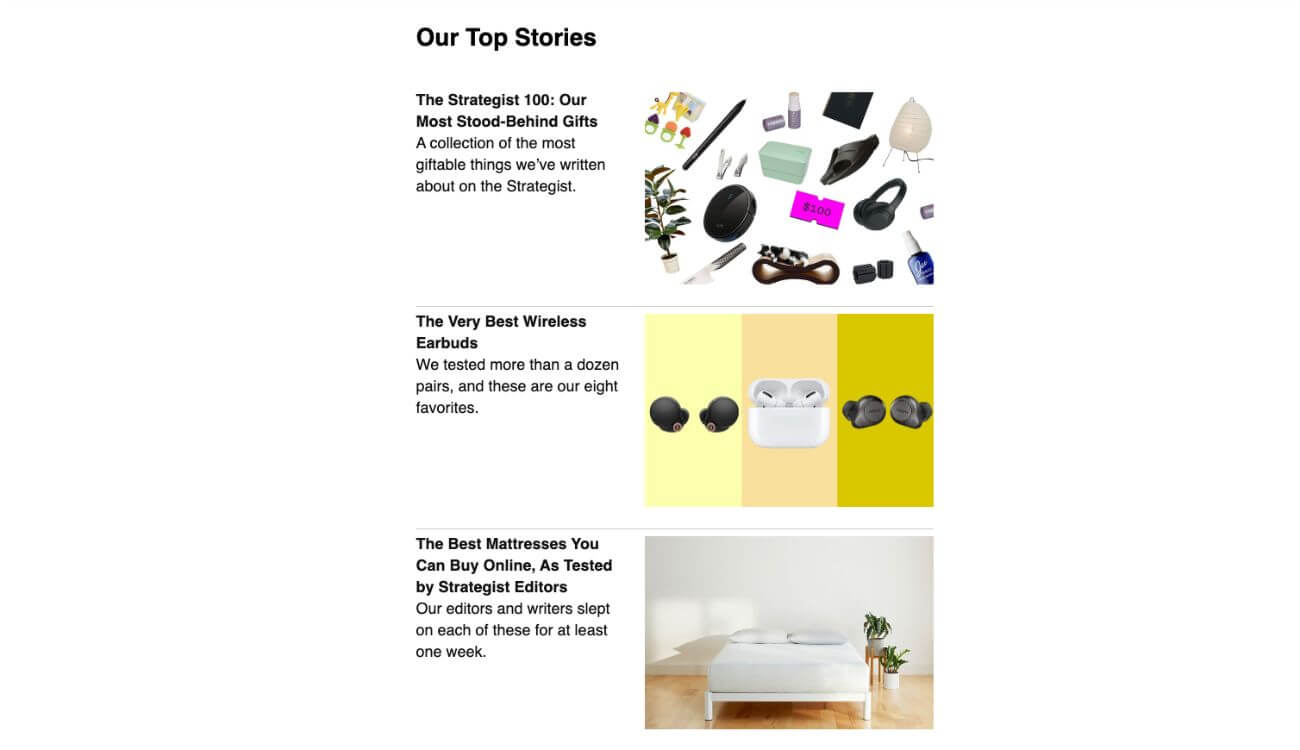
The saying goes, “Don’t sleep on email” and nowhere is it truer than in the age of Google’s relentless product review updates.
Commerce content vs sponsored content
Commerce content is different from sponsored content in that the goal of commerce content is concretely to get a reader to take action. Whether it’s clicking a link, signing up for a lead form, or downloading an app — commerce content is performance-driven.
On the other hand, sponsored content tends to have the goal of brand building and recognition.
While both have their place in your marketing strategy, commerce content is attractive because it’s easy to measure the ROI.
Where commerce content fits into your editorial strategy
Just because your media site creates commerce content doesn’t mean you have to turn it into a run-of-the-mill affiliate website.
Commerce content is about blending in product and service recommendations to your editorial workflow, not making it the cornerstone of every piece of content you produce.
Some content can and must be monetized through display advertising. This includes content like time-sensitive news, informational content, or content that is engineered to go viral on social media.
But what you’ll want to add in is evergreen content where your team needs to produce it just once, and it continues to bring in revenue year over year with a bit of upkeep.
How to get started with commerce content
- Do your audience research – Start by surveying your audience to find out which brands or products they prefer, or even try an audience research tool.
- Establish relationships with brands – Once you know which brands your audience is already familiar with, reach out to them through popular affiliate networks.
- Be clear about your goals and success criteria – Before you create your first piece of content, decide what an ROI positive outcome looks like and how long you’re willing to wait to see results.
- Set up proper tracking and attribution – Set your site up on a platform like Affilimate before you publish, so you’ll be able to track exactly how your content performed and distinguish which strategies drove conversions (or didn’t).
- Produce and distribute your commerce content – Follow your standard editorial workflow, but make sure to include a few extra steps like testing your affiliate links and designing the page to encourage a high click-through rate.
- Monitor and report on your KPIs – After publishing, monitor key affiliate publisher KPIs like clicks and earnings per click (EPC).
Is commerce content worth it?
Commerce content is more complex to master than purely informational content, monetized through display ads.
But it’s also a content monetization method that's slated to make it through the changing privacy landscape, relatively unscathed. And with the ability to push time-sensitive commerce content to your audience through email, there is no safer bet as a media publisher.
The key is twofold: diversify your revenue streams, and invest in long-term partnerships.
That, and taking a data-driven approach to your content, will ensure you have a predictable and scalable revenue stream for your media business.
Learn how Affilimate can help you scale your affiliate content tracking and reporting, and book a demo with us.
